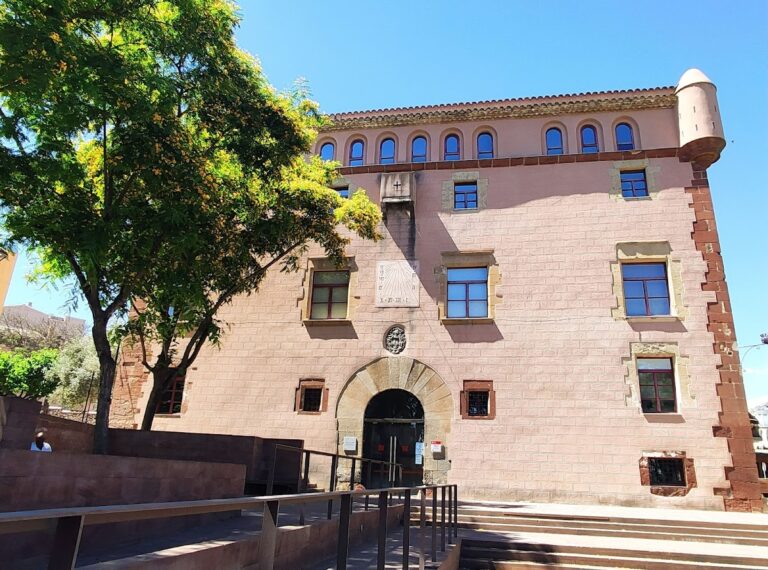Castell de Subirats: A Medieval Fortress in Catalonia, Spain
Visitor Information
Google Rating: 4.3
Popularity: Low
Google Maps: View on Google Maps
Official Website: www.turismesubirats.cat
Country: Spain
Civilization: Unclassified
Remains: Military
History
The Castell de Subirats, located within the municipality of Subirats in modern Spain, was built by Christian settlers during the early medieval period as part of their defensive frontier against Muslim territories on the Iberian Peninsula. Positioned strategically atop a limestone ridge, the fortress formed an important element in the border control of the Penedès region.
Documents from the 10th century demonstrate the castle’s foundational role in this frontier system. In a charter dated 917, the fortress was granted to the monastery of Sant Cugat del Vallès, illustrating its integration with religious institutions and its recognized status in regional governance. The castle is further mentioned in a 1060 will referring to a gift made to Saint Peter “of the castle Subiradz,” which confirms the site’s continued possession and influence during the 11th century, the period when its central tower, or keep, is believed to have been constructed. Over time, the fortress expanded to meet evolving defensive needs.
By the late Middle Ages, the castle’s ownership shifted among influential figures. In 1368, King Peter IV of Aragon assigned it, along with adjacent lands, to the future King Martin I, under a condition that stipulated its return to royal control. Less than a decade later, in 1377, nobleman Ramon Alamany de Cervelló became the owner, indicating the castle’s role within the nobility’s estate networks. Royal privilege confirmations issued in 1553 and 1559 by Philip II of Spain reinforced its jurisdictional significance.
In 1568, the Countess of Aitona transferred monetary rights connected to the castle to local communal bodies, specifically the university and parishes of the area, although the crown retained ultimate authority. The fortress endured turbulent times during the Catalan Revolt (1640–1652), known locally as the Guerra dels Segadors. Around 1641, it was captured by Pedro Fajardo, Marquis of Vélez, leading to its probable destruction in this conflict. This episode underscores the castle’s continued military importance centuries after its construction.
The crown’s control over ecclesiastical revenues in the region was reaffirmed by a royal decree in 1699, highlighting the enduring relationship between secular and religious powers connected to the castle’s domain. In the early 21st century, conservation efforts in 2004 focused on stabilizing the remnants of the castle’s main structures, preserving its historical presence in the landscape.
Remains
The Castell de Subirats occupies an elongated limestone ridge that overlooks the Penedès plain, offering a commanding view that was essential for surveillance and defense. Originally, the fortress extended across the spur’s summit, encompassing a network of walls and enclosures built primarily from the region’s limestone. Presently, only fragments of these stone constructions survive, including sections of the eastern defensive wall, a bastion, and the core area surrounding the main tower.
The most prominent surviving element is the keep, known as the torre de l’homenatge, a fortified main tower likely dating back to the 11th century. This structure was consolidated during restoration projects in 2004, along with the immediate enclosures connected to it. The keep served as the fortress’s last refuge and central stronghold. Its enduring stone walls exhibit the medieval masonry techniques adapted to local materials, ensuring resilience over centuries.
Adjoining the keep are remnants of a bastion, a projecting defensive platform designed to enhance protection against attackers, and portions of the eastern curtain wall that once enclosed the castle’s internal spaces. The construction uses locally quarried limestone blocks, fitted together to form solid barriers that integrated with the natural topography of the spur.
Nearby lies the church of Sant Pere del Castell, also called the sanctuary of the Mare de Déu de la Fontsanta. Its proximity indicates a close relationship between the fortress and religious worship, typical of medieval sites where spiritual and military functions coexisted. The castle’s alignment with other regional fortifications, such as Gelida castle to the northeast and Torre Ramona farther north, reflects a coordinated defensive network designed to control this frontier zone.
Today, the castle stands as a partial ruin amid a landscape characterized by gentle hills and open plains. The surviving masonry and reconstructed sections provide tangible insight into the fortress’s historical form and strategic importance, preserved within the natural limestone environment on which it was founded.










